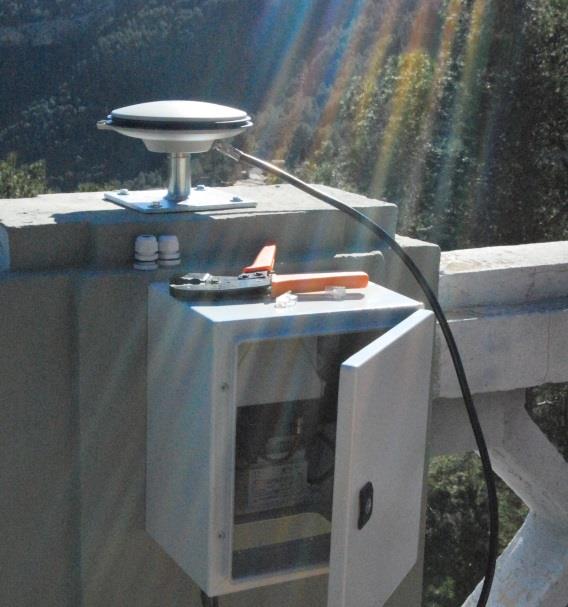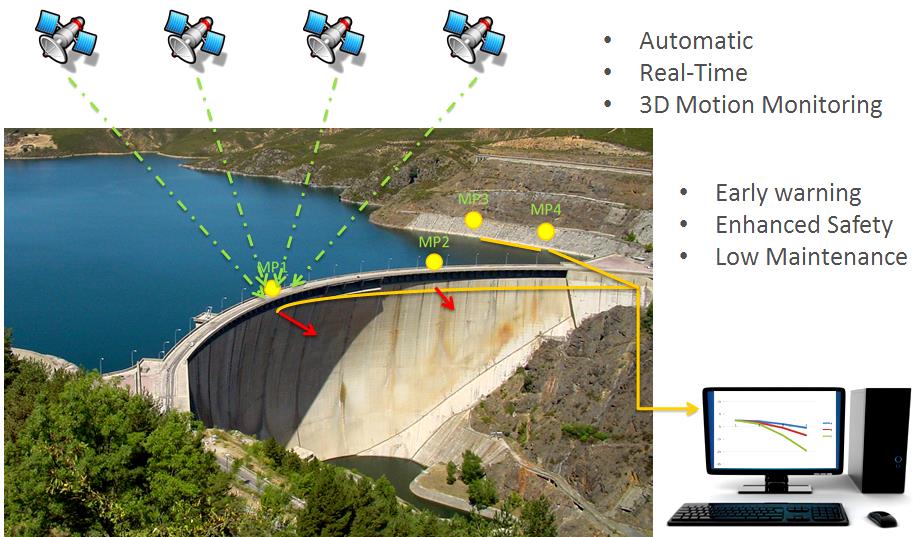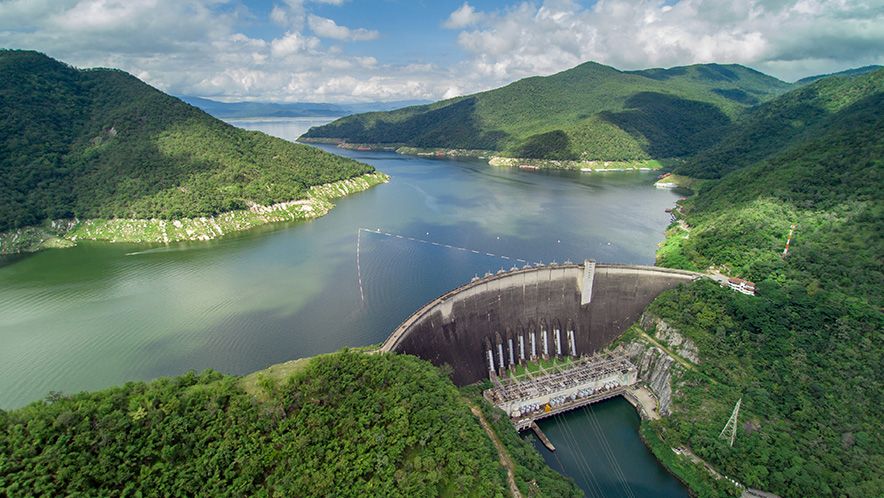Dams have been the source of some of the deadliest structural failures in history. They hold vast amounts of impounded water and are capable of suddenly unleashing tremendous destructive power, leading to massive loss of life and capital. This was tragically demonstrated in early 2019 when the Brumadinho dam in Brazil failed, killing 248 people.
Keeping dams structurally secure is paramount to the safety of local people and the economy. Now an ESA-backed consortium led by Telespazio VEGA UK and its partners, is bringing to the market an ultra-high accuracy solution for the Structural Health Monitoring (SHM) of dams.
Dams are often built in remote locations, making manual surveillance difficult and expensive: frequent monitoring to assure their structural integrity is not always feasible and may even be impossible due to weather conditions.
 DAMMINGS is a comprehensive satellite-based solution that responds to dam or reservoir hazards by delivering an accurate, reliable and cost-effective service, managed remotely. It combines different space-based solutions, which augment or replace conventional monitoring techniques (notably manual surveying) in favour of continuous and automated applications.
DAMMINGS is a comprehensive satellite-based solution that responds to dam or reservoir hazards by delivering an accurate, reliable and cost-effective service, managed remotely. It combines different space-based solutions, which augment or replace conventional monitoring techniques (notably manual surveying) in favour of continuous and automated applications.
The service is composed of two innovative space technologies: GNSS 3D real time monitoring of a discrete number of points; and persistent scatterometer interferometry (PSI). The two are complementary and offer important advantages over traditional methods. The GNSS-based service gives real-time monitoring of motion at multiple selected critical points, while the PSI measures larger area ground movements at longer intervals e.g. of one or more months.
In detail, the GNSS-based service provides real-time measurements utilising low cost hardware and advanced processing to achieve its accuracy level, whilst also delivering alerts on motion above pre-defined thresholds. The PSI solution allows monitoring over a broad region encompassing the reservoir surroundings, such that motion from neighbouring areas that could affect the reservoir can be assessed.

Davide Coppola, Technical Officer of the project at ESA says: “DAMMINGS brings strong benefits to customers, including the ability to flag dam monitoring issues early, increasing operational efficiency and saving customers’ money. The system also includes rapid alerting in emergency situations and where there is anomalous movement detection.”
Geraint Cooksley, Head of Geo Information at Telespazio says: “These systems are invaluable to those who operate dams or are responsible for their inspection and maintenance, as they lead to improved situational awareness that can help customers to understand and maintain the health of their infrastructure. DAMMINGS has a huge market potential: approximately 40,000 dams would be suitable for monitoring with our solution.”
Commercial roll-out is now underway, with initial sales of the developed services branded as “SUMMIT-SHM”. This year has seen the installation of sensors on-site in Peru, with further commercial installations expected over the next three years.
“ESA was extremely helpful in supporting the development of the two space services. This support has allowed us to understand, engage with, and demonstrate the value of our services to large dam owners and operators, and has helped us to take a product to market for which there is a high demand.” Geraint Cooksley, Telespazio



